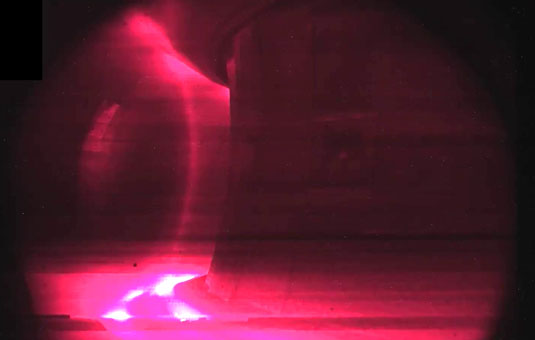1,337 seconds: It is a tokamac running from the CEA Cadarash site in southern France, and one of the mid-sized tokamac facilities of the Eurofusion Consortium, can maintain plasma on February 12th. did. This was a 25% improvement in previous record times achieved in the East in China a few weeks ago.

Plasma Records has reached a temperature of 50 million degrees. ©CEA
Reaching periods like these is an important milestone for machines such as ITER, which need to maintain the fusion plasma for several minutes. The ultimate goal is to control naturally unstable plasmas. Meanwhile, all plasma-oriented components can withstand radiation without malfunctioning or contamination.

West, cea©L. Tokamak run by godart/cea
This is what CEA researchers are trying to achieve and explains the current record. Over the next few months, the West team will double its efforts to achieve extremely long plasma durations with a combination of up to several hours, but with the aim of getting closer to the expected conditions for fusion plasma. , heat the plasma to a higher temperature.
West is a CEA facility that benefits from the committee’s decades of experience using tokamaks to study plasma. We welcome researchers from all over the world who take advantage of the important properties that allow long-term plasmas, especially superconducting coils and active cooling components. The West is one aspect of the international movement, including Jet, the UK’s European Torus Tokamak (closed late 2023), which involves other major experiments that CEA researchers have been heavily involved. Needless to say, Japan’s 60SA, China’s East and Korea’s KSTAR.
“West achieved a new major technical milestone by maintaining hydrogen plasma for more than 20 minutes through an injection of 2 MW of heating power. The experiment continues to involve increased power. This excellent result This will allow both western and French communities to lead the way for future use of ITER,” commented Anne-Isabelle Etienvre, director of basic research at CEA.
What is fusion used for?
Nuclear fusion is a technology with the ultimate goal of controlling naturally unstable plasmas. It is already highly enriched and has fewer resources and fuel than fission that does not produce long-life radioactive waste.
Of the various possible techniques for generating energy, the most advanced is magnetic confinement fusion, where the plasma is held in the torus by a strong magnetic field and heated to hydrogen fusion. Confinement fusion has been shown to generate a fusion ability of 15 MW for a few seconds by Jet.
Home to both the West and Itter, France is suitable for housing the first prototype fusion reactor. Nuclear fusion is an energy source that utilizes nuclear reactions, and many complementary aspects are well understood, with nuclear fission energy and related technologies related to neutrons and matter.
Nevertheless, given the infrastructure required to produce this energy on a large scale, it is unlikely that fusion technology will contribute significantly to achieving net-zero carbon emissions by 2050. To this end, several technical fixation points need to be overcome, and the economic feasibility of this form of energy production must still be demonstrated.



